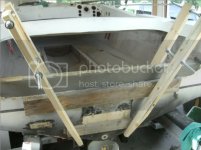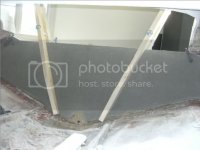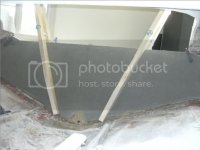Lawson'sLanding
Member
Once you're done with testing fitting, apply a nice thick layer of cabosil and resin to the inner skin, then clamp the transom in place. You want the cabosil to ooze from around the transom as you tighten the clamps, leave those on overnight or a day or two. Once that's cured use the cabosil to fill in all the voids flush with the transom all around. You're good to go!!
Thanks. Is it OK for the Cabosil/resin to be 1/4" thick or more in places? Any links to pics of proper clamps? I want the hull to fit the cap when they go back together. Hoping to have this done by next week. Thanks, Scott.














